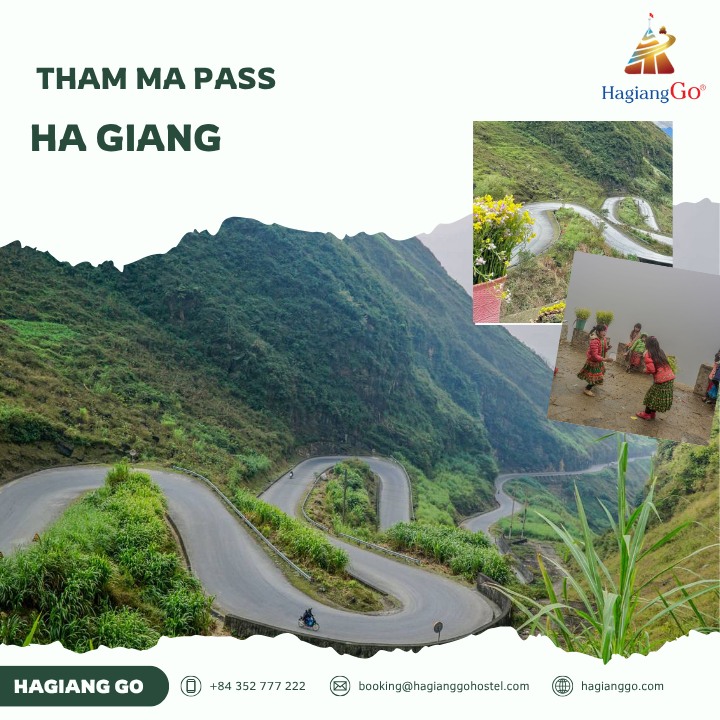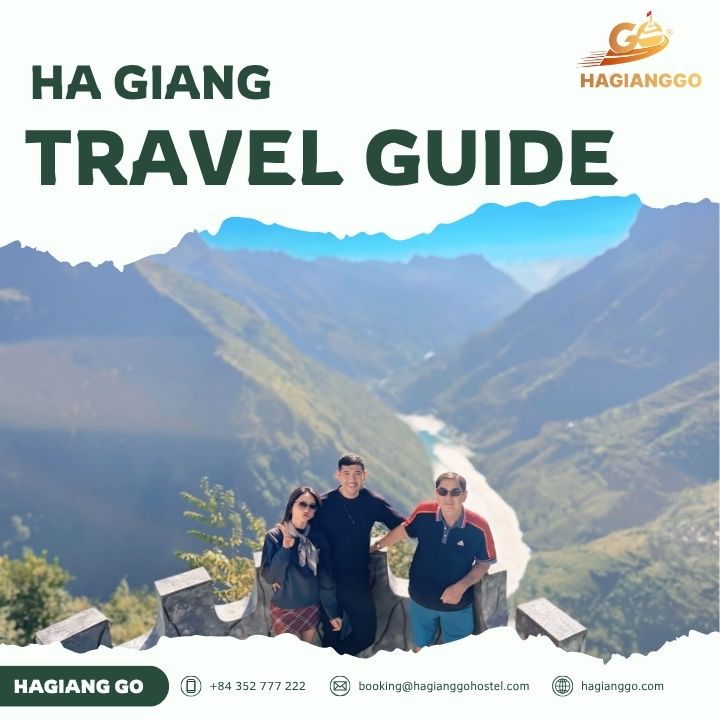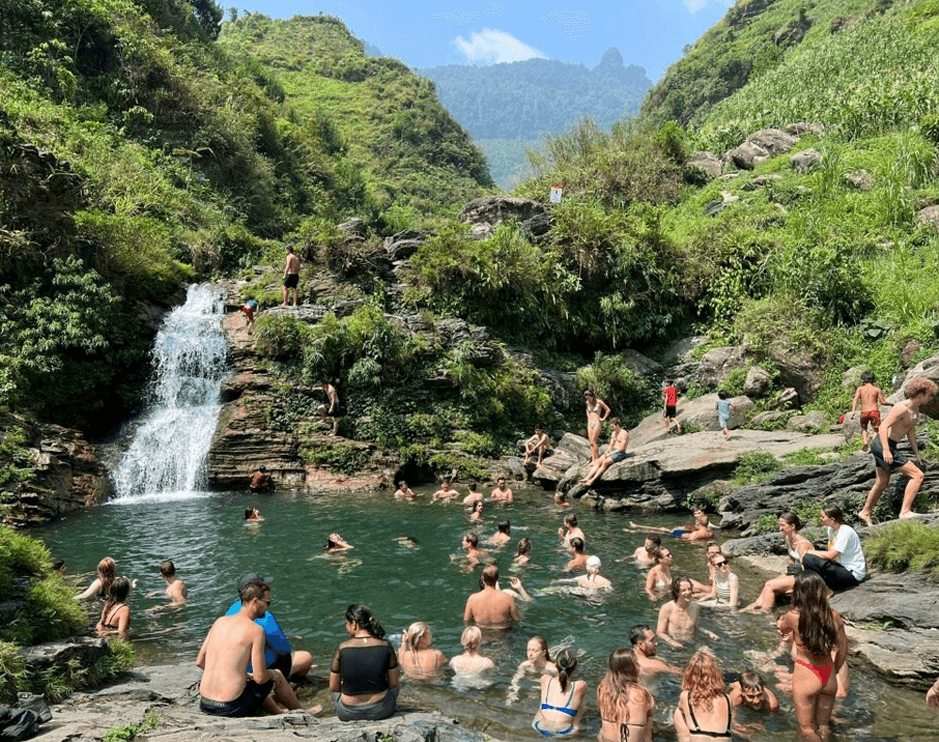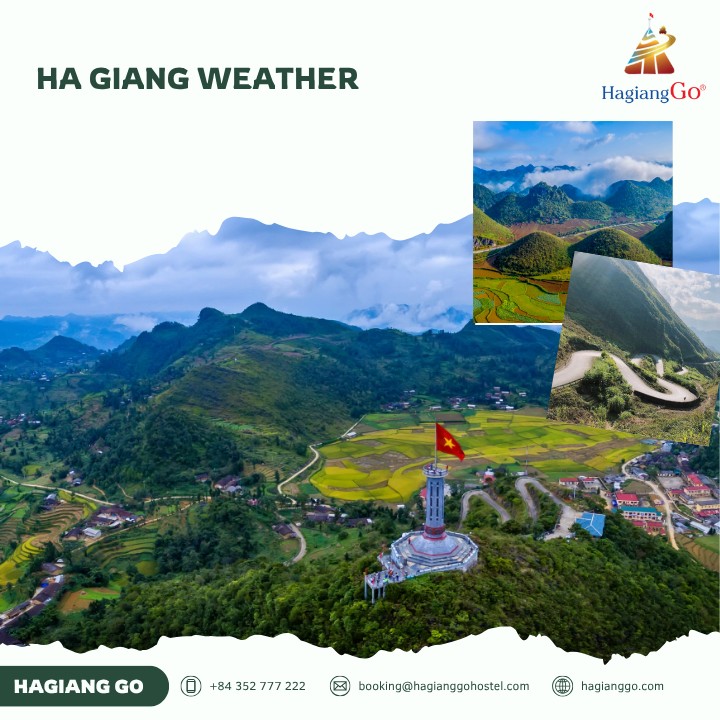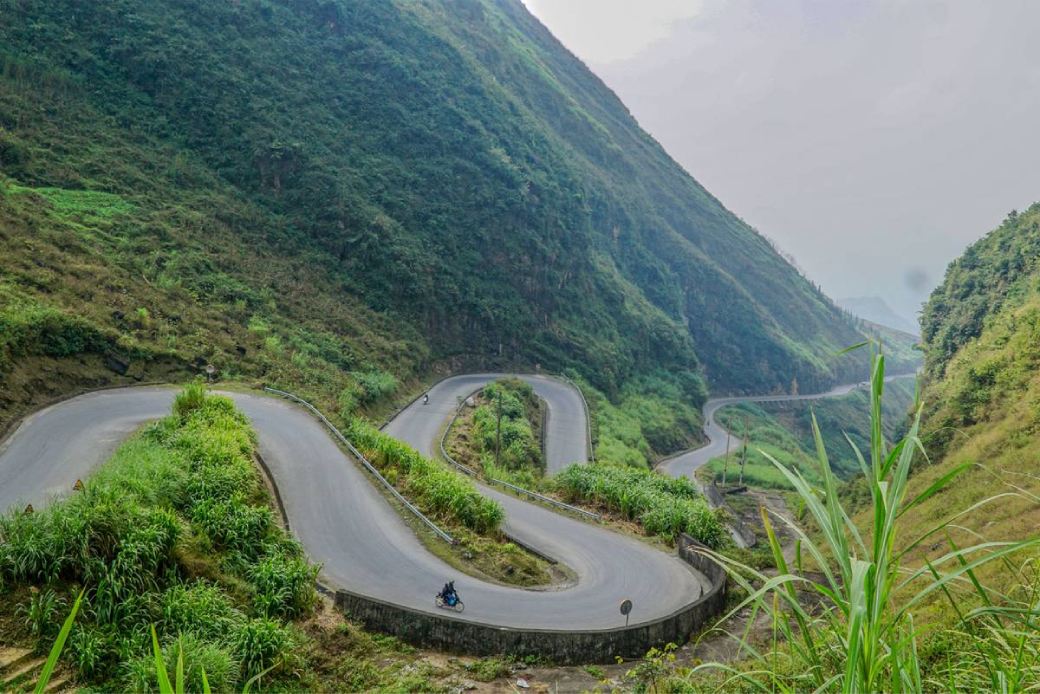
Source: Localvietnam
1. Where is Tham Ma Pass and how to get there?
1.1. Location
Tham Ma Pass, whose name translates to "horse testing" in Vietnamese, stands as a testament to its historical significance as a challenging mountain crossing. Located between the towns of Yen Minh and Dong Van in Ha Giang province, this steep, winding pass sits at approximately 1,200 meters above sea level. The name tells the story of ancient traders who would test their horses' strength on these demanding slopes before attempting the treacherous journey across the mountains.
The pass cuts through the Dong Van Karst Plateau, a UNESCO Global Geopark renowned for its dramatic limestone formations. It stretches for approximately 20 kilometers of continuously winding road, featuring dozens of hairpin turns that zigzag up and down the mountainside. The surrounding landscape is characterized by dramatic limestone karst formations, deep valleys carpeted in terraced fields, and remote ethnic minority villages.
1.2. How to get to Tham Ma Pass?
Reaching Tham Ma Pass requires careful planning, as it lies approximately 150 kilometers from Ha Giang city along challenging mountain roads. The journey begins in Ha Giang city, where travelers must first obtain the necessary permits required for foreigners visiting this sensitive border region.
The most popular way to reach Tham Ma Pass is by motorbike, either as part of a guided tour or through independent exploration. The standard route follows Highway QL4C northward from Ha Giang city, passing through Tam Son before reaching Yen Minh town. From Yen Minh, the road begins its dramatic ascent toward the pass.
For guided experiences, numerous local tour operators offer comprehensive Ha Giang Loop packages including experienced guides, well-maintained motorbikes, accommodation arrangements, and necessary permits. Independent travelers can rent motorbikes in Ha Giang city, though it's crucial to honestly assess your riding experience, as the roads present significant challenges, including steep grades, sharp curves, and unpredictable weather conditions.
Tham Ma Pass typically falls on day two or three of a standard 3-5 day Ha Giang Loop itinerary, with most travelers spending their first night in Quan Ba or Yen Minh before tackling the pass.

Local children near Tham Ma Pass - Source: Localvietnam
>>> You may be interested: Booking a Ha Giang jeep tour
2. Why Tham Ma Pass is a must-visit
Tham Ma Pass features some of the most dramatic serpentine curves found anywhere in Southeast Asia, with the road carved into sheer cliff faces. Each hairpin turn reveals new perspectives on the surrounding karst formations, creating an ever-changing panorama that keeps travelers constantly amazed.
For motorcycle enthusiasts, the pass represents the ultimate test of riding skill, while the technical challenges create some of the most spectacular photographic opportunities in Vietnam. Beyond its visual appeal, Tham Ma Pass offers travelers the opportunity to experience authentic Vietnamese mountain culture largely untouched by mass tourism, with small ethnic minority villages dotting the surrounding valleys.
3. Best time to visit Tham Ma Pass
Understanding Ha Giang's weather is crucial for planning your adventure, as weather conditions dramatically affect both the visual experience and road safety.
Spring (March to May) emerges as one of the most favorable times, with stable weather, comfortable temperatures, and spectacular wildflower blooms across mountain slopes. Clear skies provide optimal visibility for photography and sightseeing.
Summer (June to August) presents challenges with hot temperatures and increased rainfall creating lush landscapes, but also brings risks of sudden thunderstorms that can make roads treacherous.
Autumn (September to November) rivals spring as ideal timing, with crystal-clear skies, comfortable temperatures, and harvest season adding golden hues to terraced fields. This season also coincides with ethnic minority festivals.
Winter (December to February) offers dramatic fog effects and occasional frost, creating mystical atmospheres, but it brings increased safety risks with potential icy conditions and reduced visibility.
For most international travelers, the optimal visiting window falls between March and May or September and November, when weather conditions provide the best balance of safety, visibility, and scenic beauty.

Source: Vnexpress
4. Tips for travelers to Tham Ma Pass
Successfully navigating Tham Ma Pass requires careful preparation and respect for both challenging terrain and local communities. Safety should always be your primary concern when tackling this demanding mountain road.
Road safety begins with an honest self-assessment of motorcycle riding abilities. Tham Ma Pass presents genuine technical challenges, including steep grades exceeding 15%, sharp hairpin turns with limited visibility, loose gravel surfaces, and potential for sudden weather changes. If you have doubts about riding skills, consider joining a guided tour or hiring a local driver.
Essential gear includes a properly fitted helmet, protective clothing covering arms and legs, sturdy closed-toe shoes, and weather-appropriate layers. Mountain weather changes rapidly, so pack a windbreaker even on clear days. Your motorcycle should receive a thorough inspection, including brakes, tires, chain tension, and fluid levels.
Respecting local communities and practicing responsible tourism is especially important in Ha Giang's remote villages. Always ask permission before photographing people, particularly ethnic minority individuals. Small purchases from local vendors help support communities economically, but avoid giving money directly to children. Stay on designated roads, properly dispose of waste, and minimize noise pollution when passing through villages.
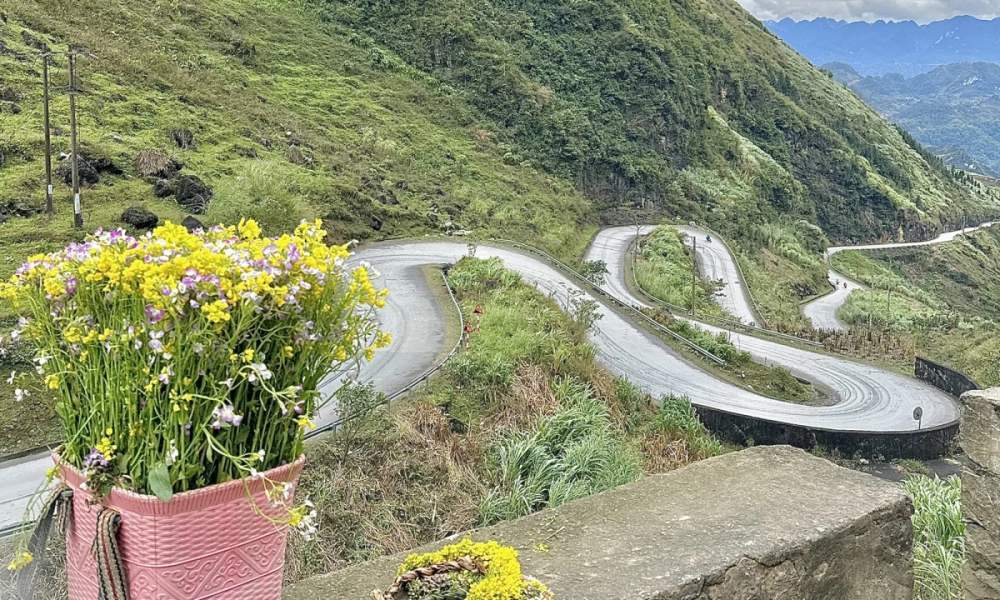
Source: Vnexpress
5. Nearby attractions to combine with Tham Ma Pass
Tham Ma Pass serves as an ideal launching point for exploring several of northern Vietnam's most spectacular attractions, maximizing your Ha Giang Loop experience.
Yen Minh Pine Forest presents a European-like atmosphere with extensive pine plantations, excellent for hiking and photography. Dong Van Karst Plateau represents a UNESCO Global Geopark featuring dramatic limestone formations, deep canyons, and unique ecosystems. Lung Cu Flag Tower marks Vietnam's northernmost point, 23 kilometers from Dong Van, offering spectacular border views into China.
Meo Vac Town and Ma Pi Leng Pass provide the dramatic climax to most Ha Giang Loop itineraries. Ma Pi Leng Pass features even more challenging curves and the famous "Heaven's Gate" viewpoint overlooking the Nho Que River valley.
A well-planned itinerary typically follows: Ha Giang city to Quan Ba, Quan Ba to Yen Minh via Tham Ma Pass, Dong Van to Meo Vac via Lung Cu Flag Tower, then return via Ma Pi Leng Pass.
>>> Best way to explore Tham Ma Pass - Take a Ha Giang Loop tour with Hagiang GO
6. Photography spots and viewpoints
Tham Ma Pass offers numerous opportunities for spectacular images. The most famous viewpoint sits approximately halfway up the northern ascent, where road widening provides safe stopping space. From here, photographers capture the classic image: multiple layers of serpentine curves stretching down the mountainside, framed by limestone formations and distant ridges.
The pass's highest point provides panoramic views extending dozens of kilometers, perfect for shots showcasing the pass's position within the broader karst plateau landscape. For optimal lighting, plan photography sessions during golden hours shortly after sunrise (6:30-8:30 AM) or before sunset, when low-angle sunlight creates dramatic shadows emphasizing the road's curves.
Regarding drone photography, Vietnam maintains strict regulations for unmanned aerial vehicles, particularly in border regions. Foreign visitors require special permits, and certain areas remain prohibited. Research current regulations before bringing drone equipment.
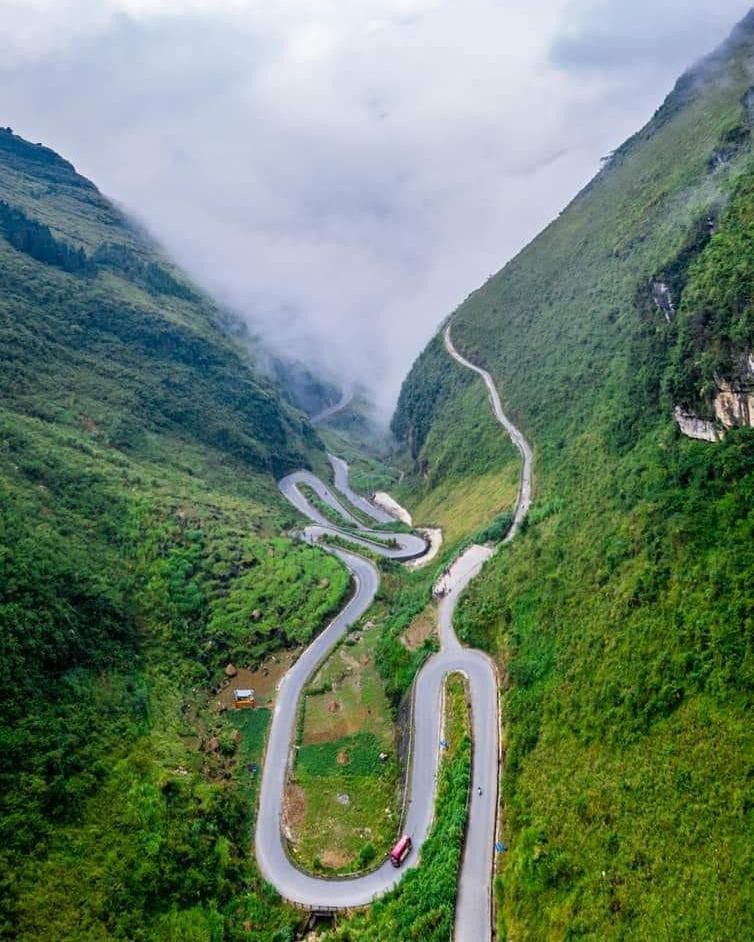
Tham Ma Pass from above - Source: Digiticket
7. Travel options: Guided vs. independent
Choosing between guided tours and independent exploration significantly impacts your experience. Guided tours provide experienced local guides with intimate knowledge of road conditions, weather patterns, and cultural sensitivities. Tour packages typically include well-maintained motorcycles, insurance coverage, accommodation arrangements, and authentic local meals, while handling all permit requirements and logistical challenges.
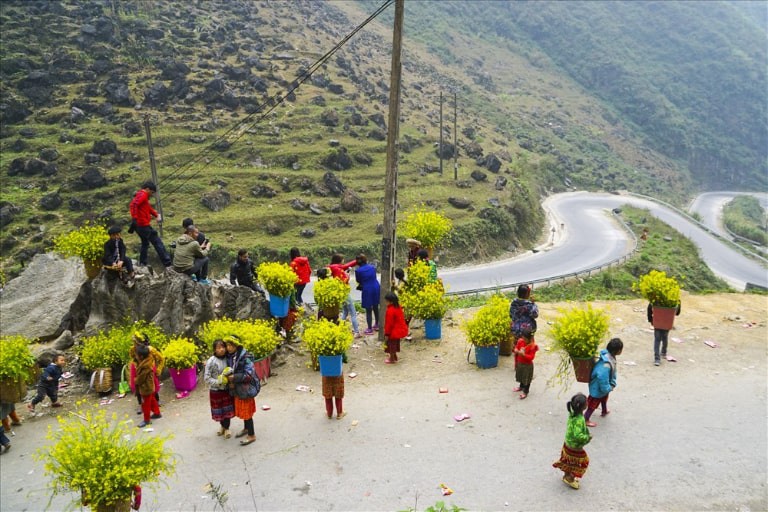
Source: Motogo
The social aspect appeals to many travelers, particularly solo adventurers seeking shared experiences. Tours often develop strong camaraderie and include stops at lesser-known viewpoints that independent travelers might miss.
Independent exploration offers unparalleled freedom and flexibility, allowing travelers to set their own pace and adapt itineraries based on conditions or interests. However, it requires significantly more preparation and carries greater risks, including language barriers and mechanical problem resolution.
All foreign nationals must obtain permits before entering certain Ha Giang areas, including regions surrounding Tham Ma Pass. Tour operators typically handle applications, while independent travelers must navigate the process themselves.
For most international travelers, especially those with limited motorcycle experience, guided tours provide the optimal balance of safety, cultural immersion, and logistical convenience. Experienced riders comfortable with independent adventure may find self-guided exploration more rewarding.
Beside Tham Ma Pass, Ma Pi Leng Pass is also one the most amazing destinations in Ha Giang that shouldn't be missed!
Tham Ma Pass in Ha Giang stands as an extraordinary testament to both natural beauty and human engineering, representing one of Vietnam's most spectacular mountain roads. Its serpentine curves, carved dramatically into limestone cliffs and winding through landscapes of breathtaking beauty, offer travelers an unforgettable adventure combining technical challenges with visual rewards unlike anywhere else in Southeast Asia.
The pass serves as more than just a route between towns; it functions as a gateway to understanding northern Vietnam's unique character, where ancient trade routes, ethnic minority cultures, and pristine natural environments converge. Whether navigating its challenges by motorcycle, capturing its beauty through photography, or simply absorbing its magnificent panoramas, Tham Ma Pass delivers moments of pure adventure and natural wonder.
For international travelers seeking authentic experiences beyond Vietnam's conventional destinations, Tham Ma Pass and the broader Ha Giang Loop represent essential additions to any Vietnam bucket list. The combination of technical challenges, spectacular scenery, cultural immersion, and satisfaction of conquering one of Vietnam's most demanding roads creates truly exceptional travel experiences.
Travel responsibly, embrace the adventure, and prepare yourself for one of Southeast Asia's most spectacular mountain road experiences. Tham Ma Pass awaits, ready to reward those bold enough to answer its call with memories that will last a lifetime.
